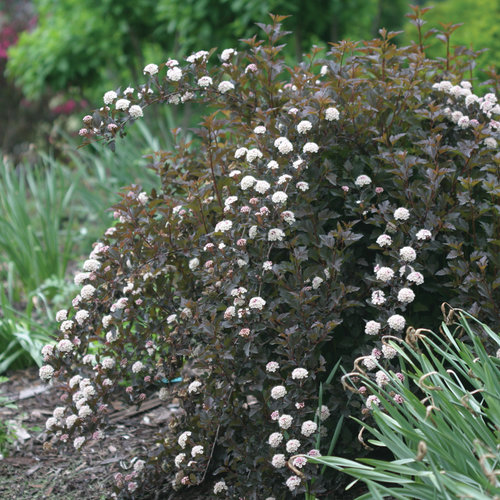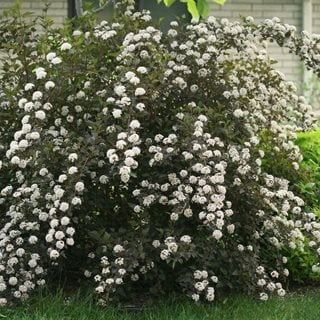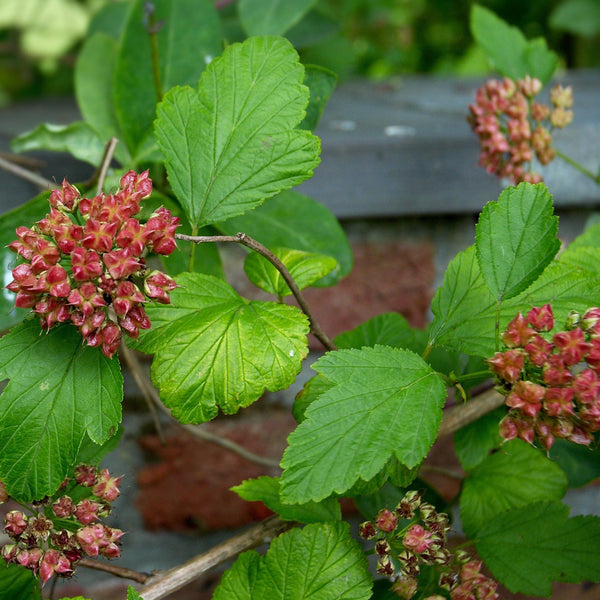Ninebark Shrub: The Lowmaintenance Beauty That Will
Ninebark Shrub: The Low-Maintenance Beauty That Will
Ninebark is a beautiful and versatile shrub that is perfect for adding interest to any garden. It is native to North America and is known for its stunning foliage, peeling bark, and late-spring flowers. Ninebark is also very low-maintenance, making it a great choice for busy gardeners.
In this blog post, we will discuss the different types of ninebark, how to plant and care for them, and some of the benefits of adding this shrub to your garden.
What is Ninebark?
Ninebark (Physocarpus opulifolius) is a deciduous shrub that is native to North America. It can grow up to 8 feet tall and wide, and it has a spreading, upright habit. Ninebark has dark green leaves that turn shades of red, orange, and yellow in the fall. The flowers are pinkish-white and bloom in late spring.
Types of Ninebark
There are many different types of ninebark, each with its own unique characteristics. Some of the most popular types include:
- Diablo Ninebark: This type of ninebark has dark red leaves that turn orange and yellow in the fall. It is very cold-hardy and can tolerate a wide range of soil conditions.
- Little Devil Ninebark: This type of ninebark is a dwarf variety that only grows 3-4 feet tall. It has dark green leaves that turn red in the fall.

- Summer Wine Ninebark: This type of ninebark has wine-red leaves that turn orange and yellow in the fall. It is a bit more tender than other types of ninebark, but it is still very hardy.

- Nana Ninebark: This type of ninebark is a dwarf variety that only grows 2-3 feet tall. It has dark green leaves that turn yellow in the fall.

How to Plant and Care for Ninebark
Ninebark is a very easy shrub to plant and care for. It prefers full sun, but it can also tolerate partial shade. Ninebark is not very fussy about soil conditions, but it does best in well-drained soil.
To plant ninebark, dig a hole that is twice as wide as the root ball. Place the root ball in the hole and backfill with soil. Water the plant well and mulch around the base.
Ninebark is a low-maintenance shrub, but it does require some basic care. Water the plant regularly during the first year after planting. Once the plant is established, it can tolerate some drought. Fertilize the plant in the spring with a balanced fertilizer.
Ninebark is not susceptible to many pests or diseases. However, it can be affected by powdery mildew. If you see powdery mildew on your ninebark, you can treat it with a fungicide.
Benefits of Ninebark
There are many benefits to adding ninebark to your garden. Here are a few of the most notable benefits:
- Beautiful foliage: Ninebark has stunning foliage that is attractive throughout the growing season. The leaves are dark green in the summer and turn shades of red, orange, and yellow in the fall.
- Peeling bark: Ninebark has peeling bark that adds winter interest to the garden. The bark peels in strips, revealing a beautiful orange-brown inner bark.
- Low-maintenance: Ninebark is a very low-maintenance shrub. Once it is established, it requires very little care.
- Hardy: Ninebark is very hardy and can tolerate a wide range of conditions. It is cold-hardy to zone 3 and can tolerate heat, drought, and pollution.
- Attracts wildlife: Ninebark attracts a variety of wildlife, including birds, butterflies, and bees.
Conclusion
Ninebark is a beautiful and versatile shrub that is perfect for adding interest to any garden. It is low-maintenance, hardy, and attracts wildlife. If you are looking for a shrub that will add beauty and function to your garden, ninebark is a great choice.
Ninebark shrubs are a beautiful and versatile addition to any garden. They are known for their peeling bark, which provides winter interest, and their showy flowers, which bloom in the spring. Ninebark shrubs are also relatively low-maintenance, making them a good choice for busy gardeners.
If you are interested in learning more about ninebark shrubs, I recommend visiting Garden Wiki. This website provides a wealth of information about ninebark shrubs, including their history, cultivation, and uses. You can also find photos, videos, and plant care tips on the website.
I hope you find this information helpful!
FAQ of ninebark shrub
Q: What is ninebark shrub?
A: Ninebark shrub (Physocarpus opulifolius) is a deciduous shrub that is native to North America. It is known for its attractive peeling bark, which can be shades of red, orange, and brown. Ninebark shrub also has showy white or pink flowers in the spring, and its foliage turns a brilliant red in the fall.
Q: How to care for ninebark shrub?
A: Ninebark shrub is a relatively easy-care plant. It prefers full sun to partial shade, and it can tolerate a wide range of soil conditions. However, it does best in moist, well-draining soil. Ninebark shrub does not need to be watered frequently, but it is important to water it deeply during the hottest part of the summer. It is also a good idea to fertilize ninebark shrub once a year in the spring.
Q: How to prune ninebark shrub?
A: Ninebark shrub can be pruned in the early spring, before it leafs out. You can shear or prune the outer branch tips to shape and reduce the size of the plant. Repeat this pruning technique throughout the summer, as needed. As the plant matures, renewal pruning will be needed.
Q: What are the common pests and diseases of ninebark shrub?
A: Ninebark shrub is relatively pest- and disease-resistant. However, it can be susceptible to scale, aphids, and powdery mildew. If you notice any pests or diseases on your ninebark shrub, you can treat them with insecticidal soap or neem oil.
Q: Where to buy ninebark shrub?
A: Ninebark shrub is available at most garden centers and online retailers.
Image of ninebark shrub
5 different images of "ninebark shrub" from Pinterest:
- Ninebark shrub in full bloom. This image shows a ninebark shrub in full bloom, with its white flowers cascading over the branches.
- Ninebark shrub in fall. This image shows a ninebark shrub in fall, with its leaves turning a beautiful shade of red.

- Ninebark shrub as a hedge. This image shows a ninebark shrub that has been planted as a hedge. The shrub is about 6 feet tall and has a dense, leafy growth.

- Ninebark shrub as a specimen plant. This image shows a ninebark shrub that has been planted as a specimen plant. The shrub is about 8 feet tall and has a spreading growth habit.

- Ninebark shrub with berries. This image shows a ninebark shrub with its berries. The berries are a deep red color and are about the size of a pea.


Post a Comment for "Ninebark Shrub: The Lowmaintenance Beauty That Will"